#asian religion
Text

The Sun and Moon Pagodas in Guilin, China (photo by Nathan Ackley)
Sun & Moon Twin Pagodas are one of the greatest attractions in Guilin, situated in Shanhu (Shan Lake).
The word sun and moon in Chinese character written together meant brightness. They are also known as Gold and Silver Pagodas because of their colors at night. They stand next to each other reflecting the beauty of each other.
Originally built in Guilin's moat during the Tang dynasty, these tiered towers were reconstructed in 2001 and now they are a tourist site combining culture, art, religion, and architecture, technology, and natural landscape.
The "Sun" Pagoda is constructed with copper; it has 9 floors and reaches a height of 41 metres. The "Moon" Pagoda's construction is made of marble; it has 7 floors and measuring 35 meters high. The two pagodas are connected via a tunnel at the bottom of the lake.
From the Moon Pagoda to the Sun Pagoda, there is a 10-meter glass tunnel that links the two under water. When walking through the tunnel, one can see the fish above the head and on both sides.
#sun and moon pagoda#china#chinese architecture#asian architecture#asia#chinese culture#asian culture#pagoda architecture#pagoda#buddhism#tang dynasty#photography#aesthetic#religion#asian religion#chinese religion#ancient china#ancient tradition#sun and moon
1K notes
·
View notes
Photo

Zoroastrianism is a modern term, but how do Persian Zoroastrians call themselves? How did they call themselves in ancient times or in the Middle Ages?
Zoroastrianism is indeed a modern term, and the followers of this religion have referred to themselves by different names throughout history. In ancient times, Zoroastrians called themselves by various terms such as Mazda worshipers or Zarathustrians after their prophet Zarathustra (Zoroaster). During the Middle Ages, when Islam became dominant in Persia (now Iran), Zoroastrians were known as Gabrs or Guebers, which means "infidels" or "non-believers" in Arabic.
Today, Persian Zoroastrians call themselves either Zartoshti or Behdinan. The term "Zartoshti" comes from the Avestan word "Zarathushtra," while "Behdinan" means "followers of good religion." These terms are used interchangeably to refer to members of the Zoroastrian community regardless of where they live in the world.
It's worth noting that there are also other groups who practice forms of Iranian religions with similar beliefs but may identify differently like Yazidis and Mandaeans.
#kemetic dreams#zoroastrianism#gabrs#guebers#zartoshti#zarathustric#behdinan#middle ages#asian#asian culture#asian religion#asians#brown skin#central asia#central asians
88 notes
·
View notes
Text


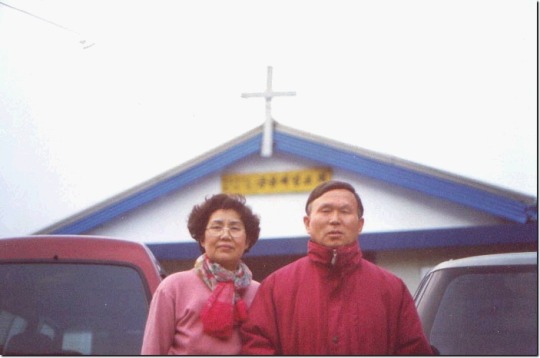

pictures depicting christianity within korea 2003 - h05400 geocities site
#korea#korean#christianity#christian#church#asia#asian#asian religion#asian christianity#korean christianity#geocities#old web#faith#religion#christiancore#oocities#uploads#finds#south korea#2003#2000s
4 notes
·
View notes
Text
ok ok, listen. I am gonna be straight with you. I am not a Patholic nerd and I really like the game. it has one of the most extraordinary stories/lore, plus its gloomy aesthetic is just my shit. but as a local Khalkh Mongolian, I very much dislike the herb bride designs. they have no inspiration from the cultures they are supposed to vaguely resemble, like literally nothing. i am a visual type of person and love it, ADORE it when shit is pretty to look at, it's in my blood. instead they opted for looking like straight-up savage unevolved cartoon cavewomen with skimpy outfits and foliage in their hair for good measure.
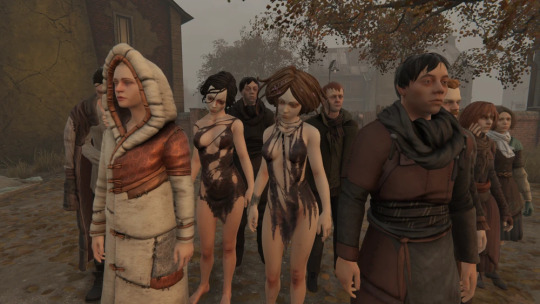
they look so out of place here, which you could argue its intentional but cmonnn???
here’s my take on how they could have looked like or at least what kind of things the devs missed out on:
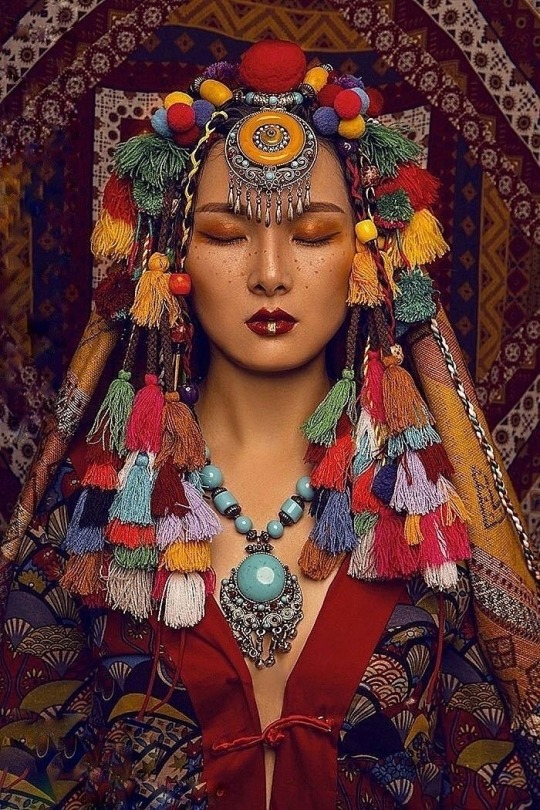

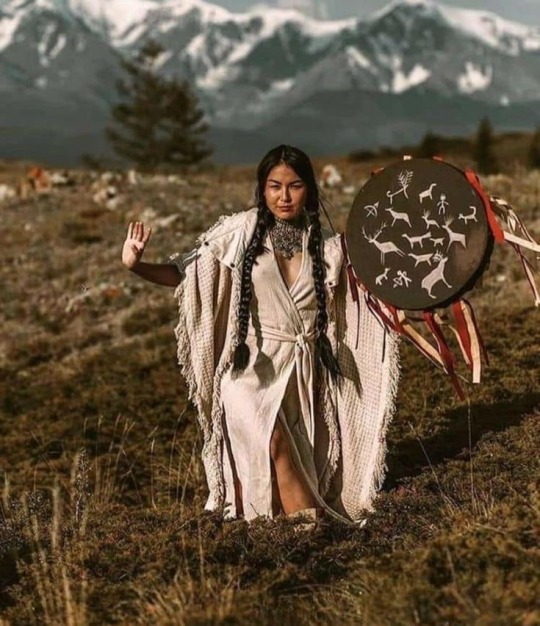

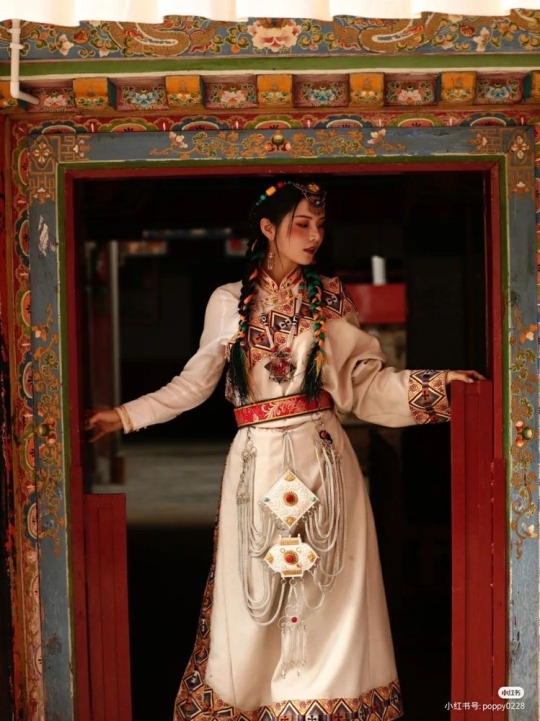

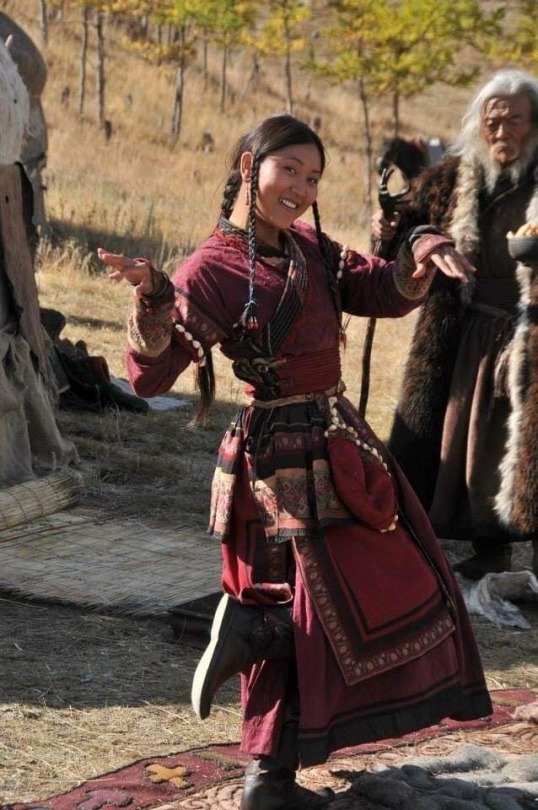

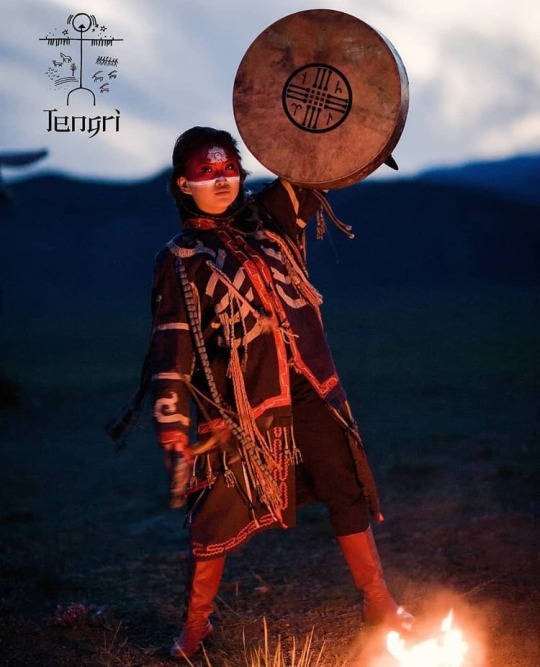


—and their hair should have been braided in many different styles? all three of the major inspirations for the kin doesn’t like loose hair, if we are speaking traditionally. i really like these thin braids:


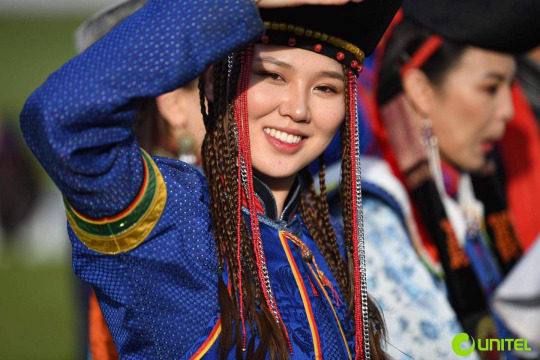
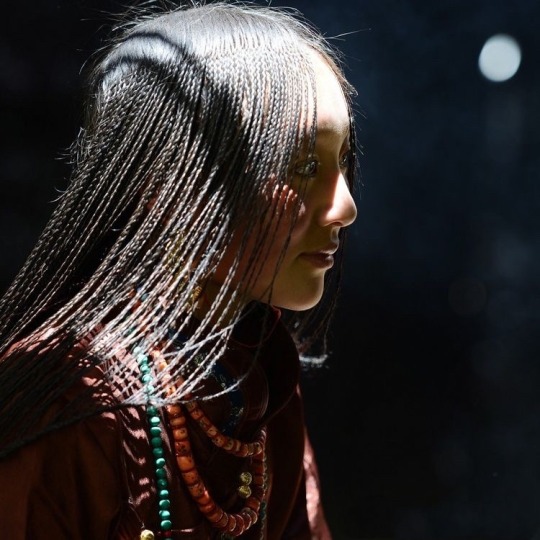
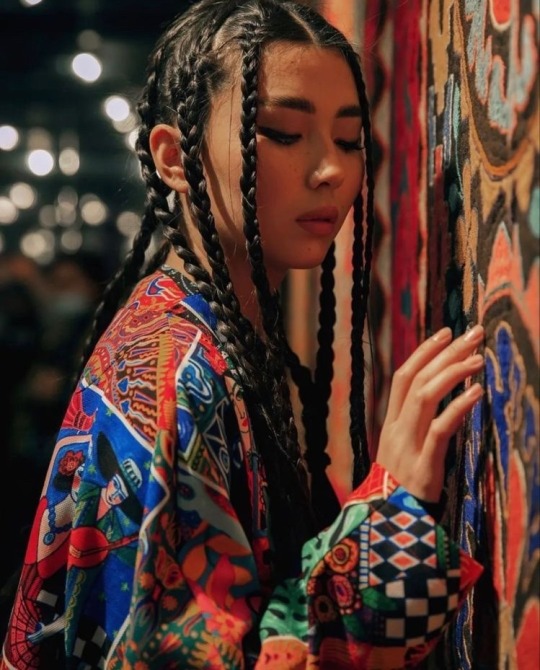
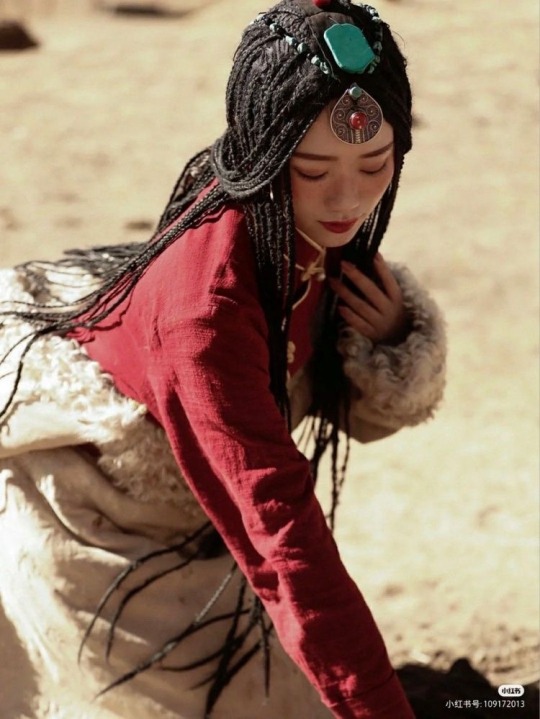
yeah, i get Orkhon economy is in shambles so no jewelry and colorful clothes but at least cover their boobage?? idk just slap on thin deel + belt and then just rough it up? make decorations out of wood?? and beads out of bones without just dangling them?? just because shit is desperate doesn't mean we gotta lose our dignity too?
edit: This post’s main point is not about restricting the nudity or the creative liberty i am only saying they should have approached this aspect from a different perspective with a native eyes on the IPL development team. It may have came off that way because i used the word boobage huh?
#everything doesn’t have to be accurate but keep your shit AUTHENTIC#do not ‘umm actually’ me unless you are a local or studied altaic cultures#deepening my lore perspective is ok too. but do not be a snob w/ me#dancing so hard that your clothes fall off is kinda bullshit excuse but ok fine. it's an interesting idea. initially#yeah herb brides get empathtic moments but we do agree this is a fetishization of poc women to a degree right? like a sexualized caricature#one of them straight up die for a open your heart joke lol wtf#and if you are gonna sexualize something at least DO IT RIGHT#there’s much so cool shit you coulda done here but nooOO savage east-asians are apparently the hip thing to do ugh#but handling of the colonialization aspect is horrible#you google traditional clothes on our culture almost every single one of those women and they will have a hairdo and a deel+belt#p.s. we don't worship bulls#or an evil entity#our religion is tengri or buddhism. some of us are monotheist too#random trivia: the pronoun “I/me” is not written “be”. it's “BI”#random trivia: unmarried woman/girl is called a sewger#pathologic#pathologic 2#мор утопия#мор утопия 2#herb brides#flintstones looking ass#god i am so gay for all these women above (except the herb bride hell nah)#makes the 4 hours i spent on this so worth it#if I had a nickel every time if slav games i liked had an anti-asian undertones#I’d have two which is not a lot but it’s weird that it happened twice#mongol#tibet#buryat#mongolia#buryatia
417 notes
·
View notes
Text



The weirdest, least successful "white supremacy" ever.
#The Rabbit Hole#model minority#model minority myth#myth of the model minority myth#homework#do your homework#household income#Asian Americans#merit#make merit matter#meritocracy#religion is a mental illness
67 notes
·
View notes
Text
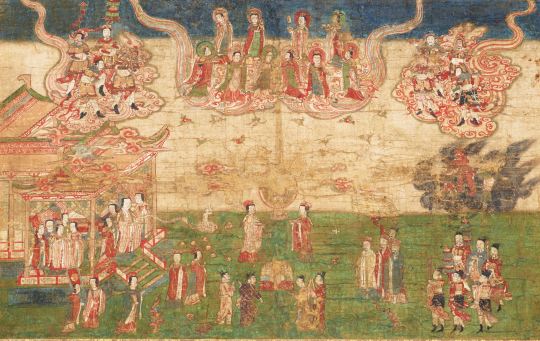
Depiction by an unknown Chinese artist of the birth of Mani (216-274 CE), founder of Manichaeism, a dualistic religion that portrays existence as a struggle between kingdoms of light and darkness. From its origins in present-day Iraq, Manichaeism spread westward into the Roman Empire (where it temporarily won over Augustine of Hippo before his conversion to Catholicism) and eastward into Asia. Though it died out in the West following intense persecution by the Christian Roman emperors, it is thought to have persisted in some parts of China into the 20th century, and perhaps still today.
Colors on silk, 35.6x56.9 cm (=14x22.4 in). 14th century (late Yuan or early Ming Dynasty). Now in the Kyushu National Museum, Dazaifu, Fukuoka Prefecture, Japan.
#art#art history#Asian art#China#Chinese art#Imperial China#Mani#Manichaeism#14th century art#Kyushu National Museum#religion#ancient religion#ancient history
45 notes
·
View notes
Text
Time Travel Question 39: Medievalish and Earlier 6
These Questions are the result of suggestions from the previous iteration.
This category may include suggestions made too late to fall into the correct earlier time grouping. Basically, I'd already moved on to human history, but I'd periodically get a pre-homin suggestion, hence the occasional random item waaay out of it's time period, rather than reopen the category.
In some cases a culture lasted a really long time and I grouped them by whether it was likely the later or earlier grouping made the most sense with the information I had. (Invention ofs tend to fall in an earlier grouping if it's still open. Ones that imply height of or just before something tend to get grouped later, but not always. Sometimes I'll split two different things from the same culture into different polls because they involve separate research goals or the like).
Please add new suggestions below if you have them for future consideration. All cultures and time periods welcome.
#Time Travel#The Pāla Empire#10th Century#The Jaintia Kingdom#700 CE#15th Century#Polish History#Indian History#Middle Ages#Greek Fire#East Roman Empire#Western Asian History#Loki#History of Religion#Indigenous History#The Americas
77 notes
·
View notes
Text
Chinese mythology. There are myths even older than Greek ones.
The myth of Chang'e, the Chinese moon goddess who was once a mortal woman and the wife of the hero archer Houyi, I know of at least 3 different versions. Of what led her to take the elixir of immortality that the gods had given to her husband as a reward for his saving humankind from the nine suns in the sky by shooting down eight of them.
1) She chose to because she was vain and feared growing old. 2) She felt like she had to because her husband wasn't good to her and she sought to escape him. 3) An apprentice of her husband's found out about it, broke into her home while her husband was away, and forced her to give it up with a knife to her throat. To keep it from falling into the hands of a villain, she swallowed it whole, and thus was forced to depart the mortal realm and be separated from the husband she loved for eternity.
Which one is the "real" or "right" one? Fuck if I know. I grew up with the last one, so that's the one I've been biased toward my whole life. Maybe none of them are "true". They're all made up stories. I highly doubt Chang'e has ever given a single fuck about what the mortals she'd left behind wrote or said about her. She's the goddess of the fucking moon and a great favorite of the emperor of heaven (hell, maybe he was that fond of her from the get go, he just went ahead and made her divine so she could join his court, because she's beautiful and the palace on the moon was unoccupied at the time, so why not). The fuck would she care.
97 notes
·
View notes
Text
In the last salty asks post I unintentionally went on a tangent in the notes about how JRO wrote religious characters which is like actually something I want to bring up on its own so like
Is it just me or does JRO have some real misses when it comes to writing religious characters? Not like every religious character is badly written or evil, but like... several of the ones that are fall into really bad or unflattering/shallow stereotypes? It's hard to put my finger exactly on why I feel that way bc he does write some actually good religious characters (aka Cyclonus).
For example, characters like the Functionist Council and Star Saber are fine to me because I'm like. Well Functionism being religious in origin makes sense, it's an interesting interplay of how religion influences the state/how the state leverages religion to bend the populace to its own whims. Religious bad guys =/= all religious people bad. Star Saber is just some random zealot that wasn't meant to be that deep at all, and eh the Inquisition-type religious zealot can be cool even if it's just the vibes of it.
But then there's stuff like... Tyrest being a normal, rational, not particularly religious guy until he gets shot with a bullet that gives him brain damage, causing him to start ranting about Cyberutopia and thinking God is personally talking to him in his brain...? Like, idk, was it really the best idea for an antagonist to go "he is evil because he got brain damaged against his will w/o even knowing what really happened to him and also because he's brain damaged he's now literally delusional and became a religious (and genocidal) maniac." It comes off as really bad taste/not thinking the implications through as far as how it reflects on religious people (bc the whole "religious people are literally delusional and stupid to think that their gods could possibly exist" thing is tired and offensive). Not to mention kind of ableist w/ the whole "oh he became evil bc he got shot in the brain and now there's literally something wrong with his mind."
(Doesn't help that the MTMTE logbooks revealed that the original idea for Tyrest was to have his killswitch be about trying to identify and execute all of the criminals/"guilty people" on Cybertron, basically an extension of his role as Chief Justice which makes so much more sense and is way more interesting and compelling???? Certainly better than (gets brain damaged) "Ah I'm now going to genocide all cold constructs because God told me to")
And then Drift with spectralism which...which... basically the extent of that whole religion is the name of a single festival (the Lost Light festival the eponymous ship was named after), and some stuff about face/body paint and colors having spiritual symbolism, then the Guiding Hand/Primus stuff that's also shared with Primalism. But then you have Drift who's the main representative of this religion basically being written as a phony who doesn't even believe in the shit coming out of his mouth. Or if his beliefs are sincere, the way he acts is basically just "oooooh, I sense unclean vibes and read into the energy of the universe" which is played for laughs or mocked by the other characters most of the time. And Drift's character is written so inconsistently (and the general religious worldbuilding so one-dimensional) that it's hard to tell if Drift is supposed to be read as some kooky fake hippie type or if he's genuinely a representation of Spectralism in general. Like, idk, the best JRO could come up for for building a religion was "they wear certain colors and patterns on them and vaguely talk about sensing energy from the universe?" It literally feels like baby's first fictional religion or like, religion as understood by a non-religious/atheist person who sees religion as nothing more than an aesthetic or some quirky rituals.
I'm not saying the story had to be about religion or have religion be brought up in every conversation, it's just...... the way he wrote/did worldbuilding for it comes off as as very "non-religious person who doesn't have any particular understanding of religion/why people are religious tries to write what they think religion is about" and most of the time it's kinda cringe.
#squiggposting#negativity#discourse#again i'm reiterating that my critique isn't 'all the religious characters are evil/all the evil ppl are religious' bc that's not true#it's more just that the religious characters are in general written as mediocre at best or offensively at worst#also in the case of drift who's (for better or worse) asian coded#his religion doesn't even have a strong resemblance to any traditional japanese beliefs either#like. all religions have spiritually significant colors or garments or symbols#the whole 'energy of the universe' could be similar to daoism maybe but it's never elaborated on besides that#just. mediocre mediocre mediocre religious worldbuilding/character writing
38 notes
·
View notes
Text

Traditional Chinese Catholic depiction of the Nativity scene
#chinese folklore#folk religion#Chinese Catholic#Catholicism#Asian#chinese painting#religious art#folk catholicism#folk Catholic#nativity
40 notes
·
View notes
Text



the paradesi synagogue in kochi, kerala, india. the first synagogue on the site, built by the city's longstanding malabari jewish community, was destroyed by portugese who'd colonized the area in their persecution of locals. it was rebuilt in 1568 by spanish and portugese jews who fled persecution and later expulsion, hence the name "paradesi" ("foreign" in malayalam).
these sephardic jews and a community of jews of mixed african and european descent who were formerly enslaved ("meshuchrarim", "freedmen" in hebrew) joined the malabari jewish community of kochi and somewhat integrated. they were later joined by some iraqi, persian, yemenite, afghan, and dutch sephardic jews. the middle eastern and european jews were considered "white jews" and permitted malabari jews and meshuchrarim to worship in the synagogue. however, in what seems like a combination of local caste dynamics and racism, malabari jews were not allowed full membership. meshuchrarim weren't allowed in at all, but were instead made to sit outside during services and not allowed their own place of worship or other communal rights.
as the "white jews" tended to be rather wealthy from trade, this synagogue contains multiple antiquities. they include belgian glass chandeliers on its walls, hand-painted porcelain tiles from china on its floors, and an oriental rug that was gifted by ethiopian emperor haile selassie.
#india#architecture#interior#worship#jewish#sephardic#mizrahi#abrahamic kerala#my posts#this seems like a combo of european racism & s asian casteism but idk anything abt castes so idk how right i am#imo the attitude of the paradesi sephardim sort of echoes what went on w/ portugese & st thomas christians#though they were also influenced by ''jewish racism'' (someone not being an ''authentic'' jew or 100% jewish in lineage)#also its interesting that most paradesi jews who left india went to other commonwealth countries while most malabar jews went to occupied#palestine (for the same reason indian muslims went to pakistan more or less). something something the west's unwanted refugee dumping groun#also i'm not saying the portugese didn't persecute against locals who practiced other religions just that there was a Very Specific type of#persecution st thomas christians and malabari jews faced from them#one more thing: i think most americans dont know (and western europeans like to forget) that the transatlantic slave trade went into#western europe as well. even if most w euro countries outlawed slavery before the us did#and also that ‘white’ has never had a linear definition (yemenites are very not ‘white’-looking to the average american)#its really interesting to me how the sephardim who ended up in w europe or euro colonies ended up being richer and more exclusionary than#balkan or most mena sephardim. probably bc more money = govts get off their backs
43 notes
·
View notes
Text
I've never seen anything written by Mindy Kaling or any show she's acted in, so when I heard the new Velma shos was going to feature Velma as a South Asian, I was excited. That was until all of the terrible things in the show and now learned of how Mindy Kaling only ever writes South Asian women as loser characters with all the same insecurities being brought up again and again, as well as her weird obsession with white men. Enough Mindy, enough with your self inserts, enough with writing the loser brown girl with the "hairy gorilla arms" that only ever takes me back to my own insecurities, enough with passing off your terrible representation as good representation just because it's representation.
#wow I just can't wait till people see how velma's written in that show and think it's okay to keep these ideas and stereotypes#fun fact: I'm extremely insecure about my own body hair. I don't wear shorts because it's against my religion but I still shave my legs#I hated knowing that when ppl in school would make fun of girls with hairy legs I would be included in that category#for a south asian woman to constantly make shows where the brown character's born-with traits are always the butt of the joke#always brought up#is so demoralizing#I thought we moved past this#it's so clear how Mindy Kaling plays for the white audience#because we south asians are tired#we're tired of it and we're tired of her#anyways that's my little rant lol#velma#velma hbo max#mindy kaling
155 notes
·
View notes
Text
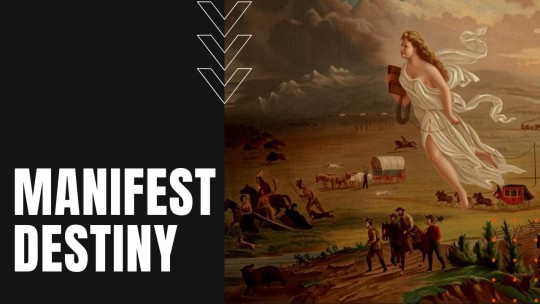
The term 'Sub-Saharan' Africa is a colonial language that was used to belittle African nations south of the Sahara and to separate the other countries from North Africa– Egypt, Morocco, Algeria, Tunisia, Libya, and Sudan due to them being Arab states.
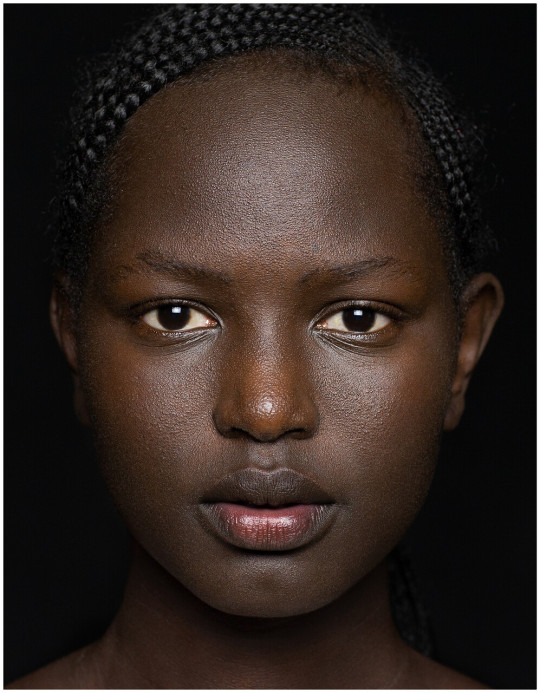
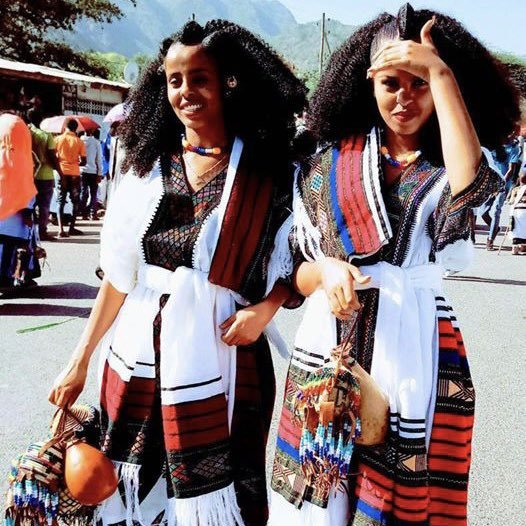


Colored, Negro, Black, Nigger
Every one of these terms come from the mindset of Europeans not Africans. Indigenous African societies do not use the term black as a racial identity outside of influences brought by Western cultures.
Contemporary anthropologists and other scientists, while recognizing the reality of biological variation between different human populations, regard the concept of a unified, distinguishable "Black race" as socially constructed.
Black is a term developed in the Colonial Assembly of Maryland, after a rebellion called Bacon's Rebellion, fought from 1676 to 1677.
The alliance between European indentured servants and Africans (a mix of indentured, enslaved, and Free Negroes) disturbed the colonial upper class. They responded by hardening the racial caste of slavery in an attempt to divide the two races from subsequent united uprisings with the passage of the Virginia Slave Codes of 1705.
White took on the meaning "British, Christian and having rights. Black meaning not having rights.
These divided the two populations, by giving poor Europeans with no power, unprecedented power over all non-Europeans.
The laws were devised to establish a greater level of control over the rising African slave population of Virginia. It also socially segregated white colonists from black enslaved persons, making them disparate groups and hindering their ability to unite. Unity of the commoners was a perceived fear of the Virginia aristocracy, who wished to prevent repeated events such as Bacon's Rebellion, occurring 29 years prior.
By refusing to call you an African, it belittles you, no such thing as black names, black land or black languages. It is like calling a woman big lips or flat butt and refusing to call the woman by her actual name. "Hey colored girl, or black boy".
In social psychology, a stereotype is a generalized belief about a particular category of people.
African populations have the highest levels of genetic variation among all humans.

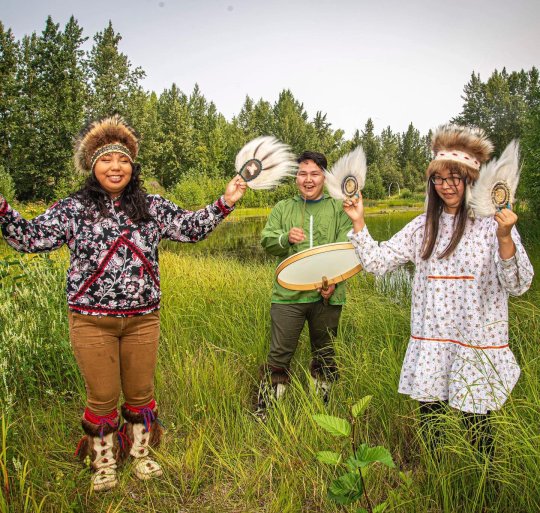
Why You Probably Shouldn't Say 'Eskimo'
People in many parts of the Arctic consider Eskimo a derogatory term because it was widely used by racist, non-native colonizers. Many people also thought it meant eater of raw meat, which connoted barbarism and violence. Although the word's exact etymology is unclear, mid-century anthropologists suggested that the word came from the Latin word excommunicati, meaning the excommunicated ones, because the native people of the Canadian Arctic were not Christian.
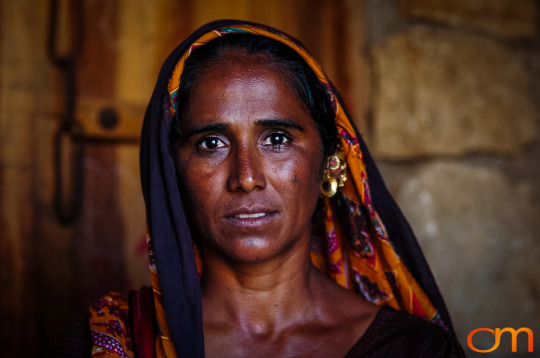
According to the Constitution of India, we are “the people of India that is Bharat”
In English language discourse, the word ‘India’ is used and in Hindi expressions, the word ‘Bharat’ is used. The Anglicised call it ‘India’, and the indigenous call it ‘Bharat’. Our ruling class calls it ‘India’, the others, the janata, call it ‘Bharat’. It has become a trend and fashion to prefer the word ‘India’ over ‘Bharat’. We converse with the country in Hindi and other vernaculars while we govern it in English.

Japanese people usually refer to their country as Nihon or Nippon
The name "Japan" in English is derived from the Portuguese word "Japão," which was used during the 16th century when Portuguese traders and explorers first arrived in Japan. The Portuguese term "Japão" likely evolved from the Malay word "Japang" or "Japang Pulau," which referred to the Japanese archipelago.
The Japanese people themselves refer to their country as "Nihon" (日本) or "Nippon" (日本), and these terms have been used in the Japanese language for centuries.

As European seen themselves as the elites of all races and god's chosen people. They took on the mindset of what I say makes the most sense.
Renaming essentially all populations they came in contact with, using their language as opposed to learning the language of the natives.
And whatever religion or spirituality people had Europeans demonized it and forced converted people to Christianity.
#african#afrakan#kemetic dreams#africans#brownskin#brown skin#afrakans#manifest destiny#colonization#colonialism#europeans#european#slavery#mindset#christianity#religion#spiritual#spirituality#asians#gujarat#gujarati people#india#bharat#nippon#nihon#english#eskimo#yupik#inuit#bacons rebellion
113 notes
·
View notes
Text
NO, REALLY. TELL ME ABOUT YOUR RELIGION.
I'm coming to an understanding that I'm on the spectrum somewhere and religion is my special interest. Like, the amount of information I possess on all kinds of Christian denominations is not normal, I'm realizing. Between all the experimentation my family has done, the invites from friends that I always accepted, my own experimentation, being in a fringe Christian community that many people don't really recognize as Christian, living abroad in South America to see the permutations of Christianity that exist there, and deep dives I've done on my own into various religious movements my ancestral family members have belonged to, I've got a library in here 👉🧠👈 on various Christian traditions. It also includes Judaism and Biblical Hebrew (which I did in college), and what I'll call a trinket box of stuff I've collected about Islam and Buddhism from the wild. I want to know more about Islam inside and outside of the Middle East, as well as more east Asian religions I've largely only been exposed to by name only.
I probably(?!) know more than the average person on a large number of Christian traditions. I always want to know more. I'm in a constant state of trying to get people to infodump on their religious traditions in a culture that teaches (but in no way enforces) that it's rude to talk about religion.
#interfaith#religion#faith#Islam#buddhism#hinduism#shinto#I don't even know what to Google to learn more about ready Asian religions
39 notes
·
View notes
Text
Notes on Anitismo - The Ancient Religion of the Philippines by Isabelo de los Reyes.

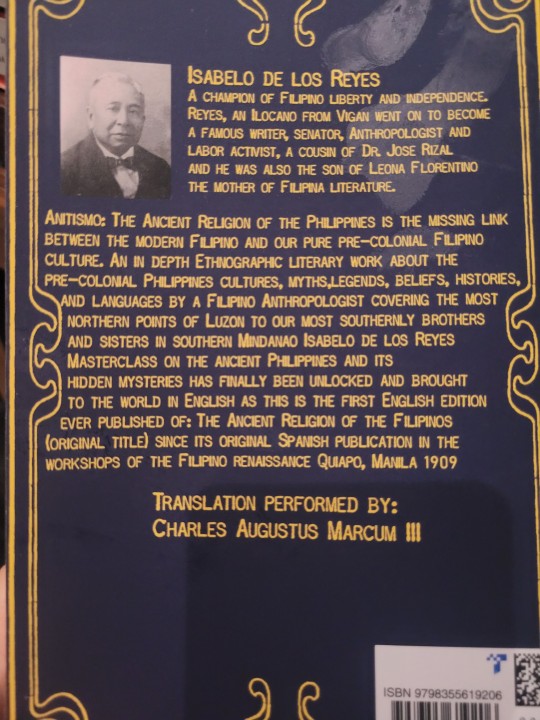
Keep in mind - this was written a while back.
Ancient Chronicles written by the Jesuit hispanic Friars state that at the that the first spaniards set foot in the Philippines from the coast of visayas to Manila there was a considerable population of Muslim converts
This was especially true for Mindanao due to conversion by Islamic teachers from Borneo
De los Reyes argues that because of this, to find native Filipino religion at its purest, we must look to the North
Distinguishing native religion without outside influence such as from Islam, Hinduism, Christianity etc can be tricky
However he argues that the traces of Native Filipino religion can be found in the stories superstitions and advice that belong to various Filipino ethnic groups (Tagalogs, Bicolanos, Zambalenos etc)
From the South of the country in Mindanao to the extreme North like Luzon, De los Reyes argues then native Filipino religion was consistent
This religion was Anitism or the Cult of Anito, meaning souls of the ancestors.
Anitism is not a monolithic religion and hosts a broad pantheon ranging from Gods to animals, nature, elements and space.
The Philippines had its own modern spiritism and De los Reyes argues this may have been the origins of the cults of "Romanist Saints" (Catholic saints) in the Philippines. By this I think he means that Filipino spirituality influenced how Filipinos proceeded with Catholic worship.
The oldest chronicles about the Philippines can be found in various museums and libraries (such as the National Library of Madrid, Covenant of St Augustine in Manila)
We can follow these chronicles, from when the Jesuit Pedro Quirino provided news of religion in the Philippines in 1604, followed by reproductions by others like the Jesuit Colin in 1663 and others such as Fr. Morga, Gonzalez de Mendoza, Aduarte etc.
Fr Morga said that Filipinos practised Anitism in certain regions like Camarines and Cagayan.
Some traditions would say that Manila and its regions were not originally native to the island - they were from Malayan islands and other remote areas.
Before the Spaniards arrived, Islamic teachers from Borneo came to preach and interacted with the locals
Their teachings and beliefs spread quickly throughout the Philippines
Fr. Grijalva writes that they (Filipinos) started adopting their traditions and took on their names.
De Los Reyes argues that Spanish conquistadors' arrival/conquest was delayed because Filipinos were already familiar with various religions and beliefs and also because of the hands of Datu Lapu Lapu. What I believe he is arguing is that Datu Lapu Lapu and the previous exposure Filipinos had to different religions at first delayed Spanish influence from spreading so quickly.
Other islanders who weren't under the control of the government in the Philippines has their beliefs influenced by religious preachers who travelled to them from the Straits of Malacca and the Red Sea.
An account, dated April 20th 1572 (preserved in the archives of India) which is from the conquest of Luzon details "In these towns, closest to the sea, they do not eat any pork, which the moors taught them. But if you ask them, they say they do not know Muhammed or his law." This account was reproduced by Wenceslao Retana.
In actuality, very few Filipinos could understand/read the teachings of the Koran despite the Islamic influence.
In Filipino traditions, reverence and worship was given to nature and the elements, and this was usually consistent throughout the islands.
Native Filipino religion beliefs include elements, animals, stars and ancestors.
Filipino religion in Manila and nearby areas was a mixture or Anitism, Buddhism, Hinduism and Islam brought by the Malays of Borneo.
Vocabulary included Sanskrit and Malay terms such as Bathala, meaning Lord.
However these terms are not used in Northern provinces.
De Los Reyes argues that Itnegs and other mountain tribes conserved and maintained the purest form of Filipino religion
In the Ilocos, Cagayan, Isabela and other provinces of Northern Luzon, native Filipino religion was more prevalent
Hindus and Buddhists converted many in Java and Malaysia.
However Muslim influence became dominant in 1478 - 60 years before the Dutch invasion.
According to Javanese legends, Hindus arrives in Java 78 years before Christ.
The first Malays came from the Minangkabau river region to establish cities in Malacca , Ojohor and Singapore in the 12th century, as per Malacca records.
In the 13th, 14th and 15th centuries, there were various Malaysian emigrations reaching the Philippines
De Los Reyes argues that Filipinos may have also populated the islands of Malaysia, and emigrations could have originated from strong winds coming down from the North.
The first Spaniards found the son of Lakandula, King of Manila, when they went to Borneo.
The emperor's master of ceremonies from Japan (Mr Fujita) argued that emigration likely came from the north and that Filipinos may have some relations to the Japanese.
According to Geographers and Historians of the Mariana Islands, what De Los Reyes calls the "know it all Spanish" - had no idea about interesting ruins found in Oceania, one of which was a prehistoric statue that was being held in the British museum.
He argues there may be hidden megaliths, artefacts, and remnants of lost civilisation in the Philippines, as seen in various locations such as : Butacan caves, Pangibalon Hill, Madias de Iloilo and Nasso.
#Philippines#pre colonial philippines#Filipino#Filipino history#Anitism#Filipino religion#Pinoy#Isabelo de los Reyes#History#Asia#Asian history#South east Asian history#Religion#ancient religion#South east asia#Colonialism#spanish colonial#Spanish colonialism#Philippines history#Philippine history#Anitismo#Keep in mind this was written a while ago so some terms may be outdated#I've tried to interpret some tricky parts the best I could#My ass who is from the Northern Philippines 🗿
51 notes
·
View notes
Text
Just the entire part with Trin falling in love with his drama teacher and his mental illness that is being treated but that he's trying to find a way to cure instead and the Anurak was obviously involved in trying to 'help' him and the combination of religion and mental illness and queer love and the intersection of wanting freedom from your mental illness in queer love but finding instead a sort of comfort in religion telling you that you can pray yourself better, pray it all away only to lose every bit of it instead...
#shadow the series#thai bl#thai bl drama#bl drama#bl series#thai series#thaibl#asianlgbtqdramas#thai drama#asian lgbtq dramas#thai bl series#it's the intersection of mental illness queerneess and religion
28 notes
·
View notes